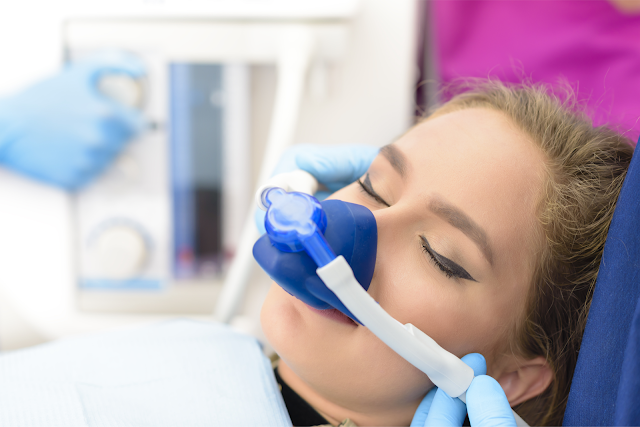Everything you need to know about gum disease!
Do your
gums bleed when you brush your teeth? This is one of the most common signs of
gum disease. Gum disease, or periodontal disease, is a common problem in many
patients, but is often misunderstood and left untreated. That’s why we’re here
to explain gum disease in full, and how best to treat it so you can have a
happy and healthy smile!
Gums can often
become red and swollen, and progress into bleeding, indicating the body’s
inflammatory process in response to harmful bacterial plaque. You may also know
this as Gingivitis. If the plaque is not brushed away from teeth and flossed
daily, harmful bacteria can cause the gums to become inflamed, which progresses
into gum disease when left untreated.
In this
state of ill-health, the gum inflammation can worsen, and the supporting bone
of the teeth can resorb due to the body’s own defence mechanism. Some of the
side effects of gum disease include:
- Pockets forming around the teeth where the gum detaches from the surface of the tooth
- Receding gums, exposing underlying tooth surface
- Discharge of pus from the gums
- Mobility and loss of support of the tooth
- Excess bleeding on brushing and flossing
- Bad breath.
Gum disease
can progress significantly if left untreated. Fortunately, you are not alone!
Here is our process for the proper treatment of gum disease:
- Assessment – Composing a ‘gum chart’ to record the measurements for all surfaces of the teeth. This is done by moving a specialised probe gently around the gums, or using x-rays to assess underlying bone
- Oral Hygiene Instruction – in conjunction with treatment, home care is imperative for the success of treatment and long term stability of the teeth. We will advise and correct your tooth brushing technique and interdental cleaning, recommend an appropriate mouth rinse and help you manage any particularly difficult areas to clean.
- Deep scaling – the use of specialised instruments to flush out plaque from below the gum line. Local anaesthetic injections are often required, and cleaning is usually completed over two appointments. Treatment costs can vary depending on the extent of disease, up to approximately $1000 for most patients.
- Maintenance – your Oral Health Therapist will
manage the gum disease with regular maintenance visits every 3 or 6 months.
Follow up is essential in order to accurately assess the gum’s response to
treatment.
With proper
deep cleaning, your teeth and gums will start on the road to recovery!
Immediately after your cleaning, you may feel the teeth to be smoother, but may
also feel some new ‘gaps’ where the plaque has been cleaned away. Your gums
will be tender for a few days following treatment, so remember to be gentle!
Within a
few weeks you can expect to notice less bleeding and swelling, and your gums
should begin shrinking back to normal. This may expose the root surface of the
teeth which will also be quite sensitive. In this case, we recommend the use of
a specially formulated sensitive toothpaste.
Upon
completion of the initial phase of treatment, further review is usually
scheduled within the first 3 months. Maintenance visits are then booked for
every 3 or 6 months, depending on your individual condition!
When was
the last time you had your teeth cleaned? If you are experiencing gum pain or
disease, or even just need your next regular check up, come in to Green Valley Dental! Either book your consultation online or call us on 1300 785 592. We’d
love to hear from you!




Thanks for this detailed piece of information! I like this post.
ReplyDeleteGreat breakdown of gum disease! It’s a reminder that prevention is key. With Texas family dentistry, patients of all ages can get the right care to keep gums and teeth healthy.
ReplyDelete